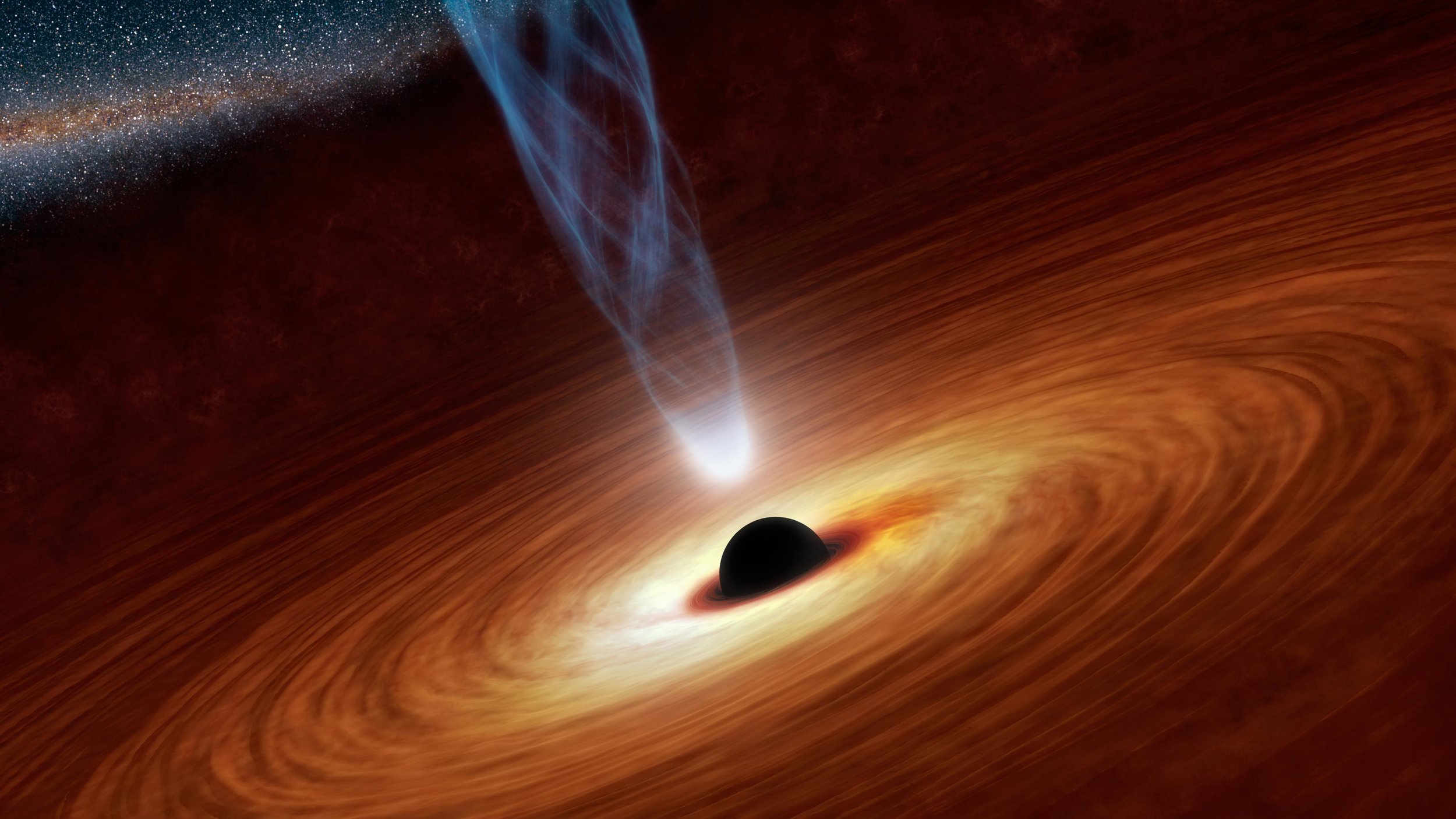[#40] So Far and yet So Near
By Piet Hut
As an astronomer, I am often asked how we can possibly understand such mysterious objects as black holes, distant in space, and the Big Bang, so very distant in time. The answer is simple: in the Universe, distant objects are often easier to understand than nearby ones. That sounds paradoxical, so let's look at a few examples.
We can start with a comparison of the Earth and the Sun. We stand on the Earth. We can drill into it. We can measure seismic waves traveling through the Earth. And yet, we have a far better picture of the detailed conditions and composition of the Sun. The reason is that the interior of the Sun is extremely hot, with most of it well over a million degrees. At these temperatures, all forms of matter are broken down into their subatomic constituents, atomic nuclei and electrons, in a state that we call a plasma.
In contrast, the temperature in the interior of the Earth is far lower. Most of the interior is solid, with a core that is partially liquid. In the solid state, matter can take on an enormous variety of shapes and conditions. As a comparison, take a drop of water and a snowflake. A drop of water is a drop of water, but a snowflake can come in seemingly endless varieties. In general, the higher the temperature, the simpler the state of matter. As a result, we can compute with a high degree of confidence what the interior state of the Sun is, while there is far more uncertainty about the interior state of the Earth.
Now let us take a second example. The Sun is a star, a rather average type of star, of which there are billions in our Galaxy alone. Most of the matter in the sun is hydrogen, about three quarter of its mass. Of the remaining one quarter, the bulk is helium, with only two percent of the mass made up of other chemical elements. Hydrogen and helium were formed in the Big Bang, while the other elements were produced in earlier generations of stars. After these earlier stars died, some of their matter was mixed with the rest of the interstellar gas in our Galaxies, from which later the Sun was born.
Even though all the other chemical elements constitute only two percent of the Sun, they play an important role in the Sun's structure because they influence important properties such as the opacity of the interior and the rate of nuclear reactions. The Sun would be much simpler to model if it were only made out of hydrogen and helium. In fact, the very first stars that were formed in the Universe only contained hydrogen and helium. And those are exactly the stars that now seem furthest away from us. The further we look in space, the further we look back in time, so the very first stars are at the largest distance from us.
This means that we can say more about the stars at the edge of the visible Universe than we can say about all stars at intermediate distances. Isn't that paradoxical?!
And what we have seen for the Sun and other stars, being hotter and simpler than the Earth, holds even more so for the time just after the Big Bang. When the Universe was one second old, celebrating its first 'secondversary', the temperature everywhere was about a thousand times higher than that of the center of the Sun. This means that it was still so hot that protons and neutrons could not possibly stick together to form the nuclei of chemical elements.
At that time, any place in the Universe was just like any other place, and it is a simple homework assignment for a beginning graduate student to compute the state of the Universe at that time, from first principles. And even earlier, when the temperature was a hundred times higher yet, we can calculate the properties of the "first mist in the Universe", when the first quark-gluon droplets condensed.
I could continue with many more examples. To mention just one: the nearest black hole is far more distant, fortunately, than the Sun, yet we can describe the structure of a black hole much more accurately, with a single relatively simple mathematical equation. Two black holes with the same mass, angular momentum and charge have exactly the same structure.
Note that we cannot observe what happens near the center of a black hole, where our equations show a singularity, a sign post of as yet unknown physics. However, that center lies deep within the horizon, the area from which no light, or anything else, can escape, so observations can only determine mass and angular momentum (charge is expected to be negligible), and that is it.
Therefore, two black holes with the same mass and angular momentum therefore are more alike, as far as the outside world is concerned, as identical twins can ever be. In contrast, no two stars are exactly the same. Not only their mass and speed of rotation are different, but the exact composition in terms of all the chemical elements of the periodic table is bound to be at least slightly different, formed as they are from different interstellar gas clouds. In addition, the very complex magnetic field structures are bound to be different: think of the Sun's solar flares, which come and go.
And more complex than any star is the structure of a human brain, and the processes therein that allow us to make all these conclusions. Of what is the closest to us, closer than our own eyes, we still know a lot less than we know of the distant stars.
This, the mystery of consciousness, is the central topic for YHouse, more challenging than the study of the structure and evolution of the material Universe.
Piet Hut is President of YHouse (where this blog is hosted), Professor of Astrophysics and Head of the Program in Interdisciplinary Studies at the Institute for Advanced Study in Princeton, and a Principal Investigator and Councilor of the Earth-Life Science Institute in the Tokyo Institute of Technology.

![[#40] So Far and yet So Near](https://images.squarespace-cdn.com/content/v1/585711b3ebbd1a051da20b4d/1523579098858-S4GA7PNEDMCTFD8LVSSV/Creation_of_Adam_Michelangelo.jpg)



